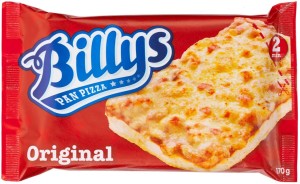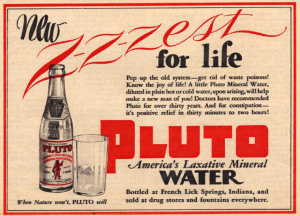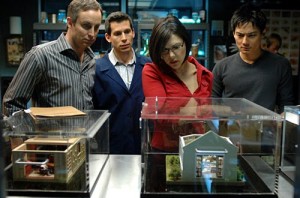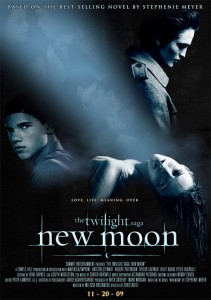by Michelle Gagnon
We’re winding up our first page critiques this week. Thank you everyone for your patience, especially all of you brave folks who submitted pages. We apologize for any delays in posting them.
Today I thought I’d talk a little bit about formatting. As a savvy commenter pointed out last week, some of the first pages we’ve posted appear to be longer than others. Some of you sly dogs submitted a 10 pt font, single-spaced page. This isn’t something an agent or editor will let you get away with, however, so in the interest of keeping the process as fair and helpful as possible I re-formatted today’s submission (which ended up weighing in at TWO full pages, not one).
Here’s why: the point of this process is that we’re critiquing what most agents would read, and that’s one page. You have that much time to grab their (and our) attention. So fudging the formatting doesn’t really help. The main goal should be to make that first page compelling enough to keep a reader turning to the second, and then the third…and so on.
Here, then, is the true opening page of Kerguelen:
Prologue
My boots are slick with blood and guano. I push my feet through dead terns and petrels, their downy wings flopping, their necks lolling as though life never belonged there. I plow ahead, daring not lift my feet. In some places the litter of birds is half-a-foot deep across this flat headland overlooking the gunmetal ocean. Not a sound from the cliff-face rookery just beyond the edge, an odd braid of birds now and then falling off into dead space. I turn around and follow my plowed trail over the headland back toward my cottage.
Day without wind—a rarity. Fog creeps past the knobheads of grass and fennel, thinning, whispering above the flagstone steps of my cottage. It’s simple really. Fog is moisture, water laden with whatever is in the air: pollution, particulates, poisons. Give us our gales, thank you, from sea-borne air currents that daily carry more and more of the rest of the world to us. Even as far away as the southern Indian Ocean. No one lives isolated—even on a remote island like Kerguelen. Air circulation patterns being what they are in our little whirlpool pocket of climate, yes, in time, we will breathe the same air as everyone else.
There. My last breath was joined by some remainder of a cough from a 19th century Liverpool tubercular ward and a little something from a hacking terminal flu case in Coeur-d’Alene and, of course, the tick-tick-ticking of some isotope, Strontium 90, perhaps, Lawrencium, Polonium.
Some of us thought of going underground, but now it’s surely too late for that. We hope that each day will bring a topping out, and then we will begin the downhill slide, nursing our inevitable lesions, losing hair, pressing on despite frail appetites. We’ve all read and reread the survival manual. We know how it will go. We just hope it won’t turn out as badly as all that.
The good news here is that I would definitely keep reading. I’m a sucker for post-apocalyptic novels anyway (ORYX AND CRAKE, anyone?) I do think the language could use a merciless edit, however. Some of the metaphors didn’t really work for me, they felt somewhat melodramatic and cumbersome. For example, in the second sentence: “I push my feet through dead terns and petrels, their downy wings flopping, their necks lolling as though life never belonged there.”
I think the image of the dead birds is powerful enough on its own: lose the “as though life never belonged there.” Also, consider cutting “my feet.” You also repeat “plow” in the first paragraph, a big no-no. I’m not entirely certain what a braid of birds looks like: that expression briefly took me out of the story.
I’m assuming that the rookery is on a sea cliff- shouldn’t there be a splash when the birds hit the water? I actually think incorporating one makes that sentence more effective. Word choice is always critical. Instead of “some of us thought about,” I would write, “some of us considered.” It’s tighter and less clunky. Also, the second half of that sentence, “but now it’s surely too late for that,” is overwritten. Just say, “it’s too late for that now.”
I’m a little confused by the “topping out” and “eventual slide” in the final paragraph. Is the topping out when air quality reaches the absolute worst point, then gradually starts improving? Or is it when the worst of those air currents finally reaches the island, setting about the inevitable death of the inhabitants? I think if that information is being offered on page one, clarity is key. I love how the page ends, however. Great work.
So, to sum up: compelling premise, just needs some tightening up. And since I’m just emerging from full-bore editing mode on my own manuscript, here are my suggestions for a much tighter opening page:
My boots are slick with blood and guano. I push through dead terns and petrels, their downy wings flopping, necks lolling. In some places the litter of birds is half-a-foot deep across this flat headland overlooking the gunmetal ocean. Not a sound from the cliff-face rookery, except for the occasional splash of a dead bird tumbling into the water. I turn around and follow my plowed trail over the headland back toward my cottage.
Day without wind—a rarity. Fog creeps past the knobheads of grass and fennel,
whispering above the flagstone steps of my cottage. Fog is moisture, water laden with
whatever is in the air: pollution, particulates, poisons. Give us our gales, sea-borne air
currents that daily carry more of the rest of the world to us. No life remains isolated—even
on a remote island like Kerguelen. Air circulation patterns being what they are, in time we
will breathe the same air as everyone else.
There. My last breath was joined by the remnants of a cough from a 19th century
Liverpool tubercular ward, combined with a hacking terminal flu case in Coeur-d’Alene
and, of course, the tick-tick-ticking of some isotope: Strontium 90, perhaps, or Polonium.
Some of us considered going underground, but it’s too late for that now. Every day we pray for a
topping out, after which we begin the downhill slide, nursing our inevitable lesions, losing hair,
pressing on despite frail appetites. We’ve all read the survival manual. We know how it will go.
We just hope it won’t turn out as badly as they promised.









